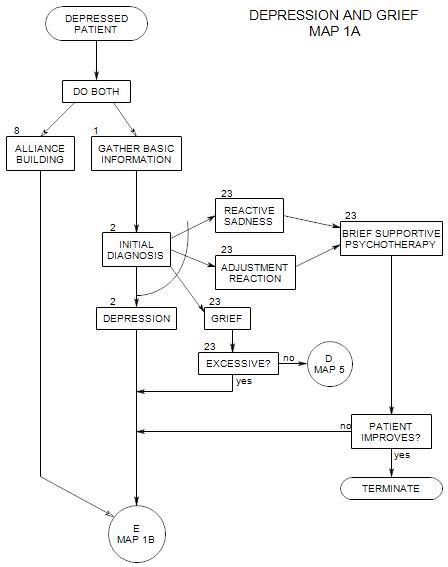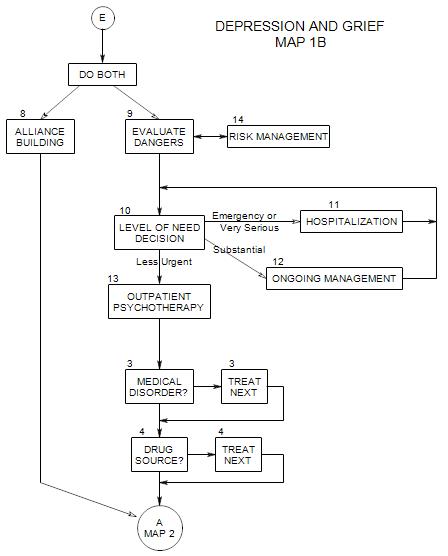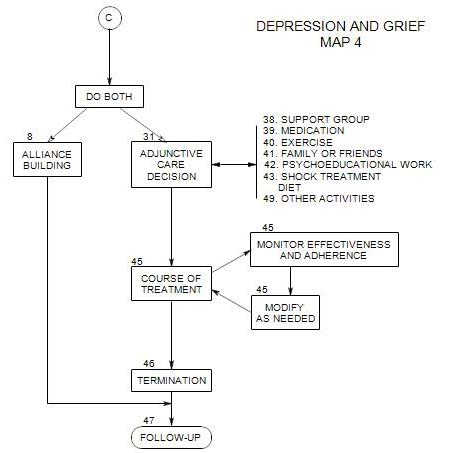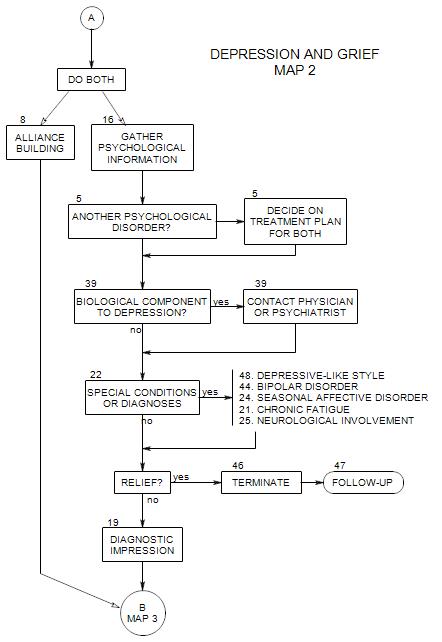
SECTIONS: 5 | 8 | 16 | 19 | 21 | 22 | 24 | 25 | 39 | 44 | 46 | 47 | 48
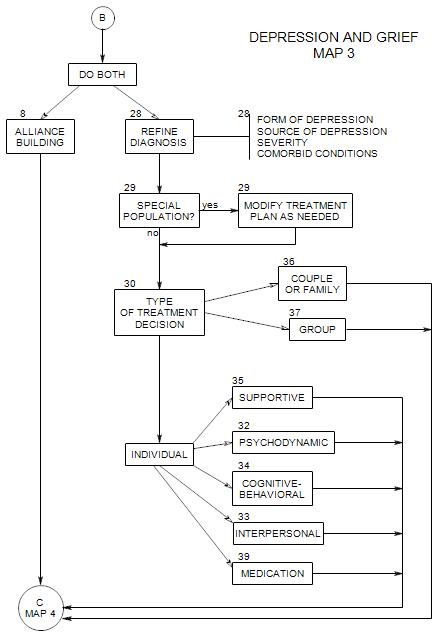
SECTIONS: 8 | 28 | 29 | 30 | 32 | 33 | 34 | 35 | 36 | 37 | 39
-
Follows Section 22 on Map 2
A person who lives under constant stress and is unable to be free about self-expression may develop a depressive-like style that reflects a defensive way of relating to the world rather than depression.
Example: A young man from a highly intellectually competitive family has decided that he wants to be a cartoonist but is unable to share this ambition with other family members. He does well in high school but refuses to apply to college business schools. He gets a low-paying job and spends his spare time in his room drawing. His reaction to family pressure is to become sullen and withdrawn. To his family he appears either to be depressed or to be more depressed than he actually is. There is a risk that his behavior will be over-interpreted and treated as pathological depression without looking closely enough at the assumptions and reactions that contribute to the appearance of depression.
